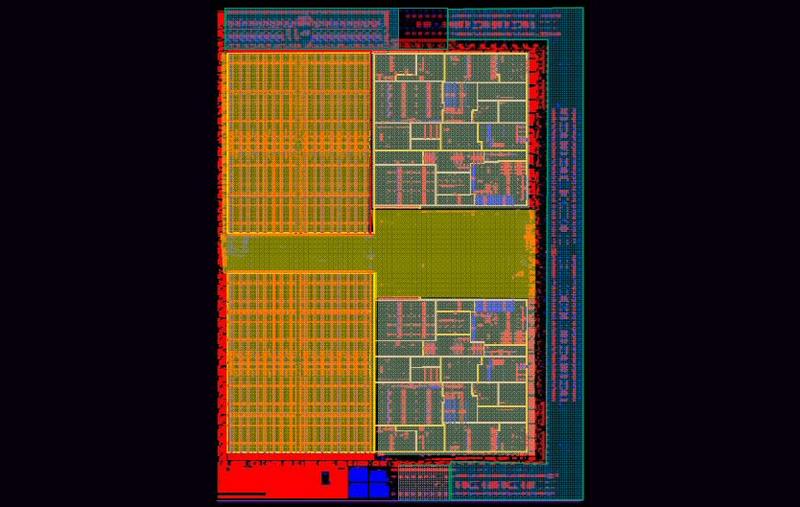AMD casts light on Griffin and Puma plans
AMD reveals details of its next-gen mobile processor, codenamed "Griffin" and part of the "Puma" platform

Intel rival AMD has put the spotlight on plans for its next-generation mobile processor, codenamed "Griffin", which is part of the "Puma" platform.
AMD Fellow Mo Steinman, who has been leading the work on mobile designs within AMD, briefed us on AMD's latest response to Intel's Centrino mobile platform. Steinman described Griffin as AMD's first processor redesign aimed specifically at the mobile market.
The 65nm dual-core chip is notable for its attempt to wrestle further power efficiencies from its hardware components and the silicon integration of NorthBridge functionality (memory controllers and PCIe management) on its own power plane.
There is also power optimised DDR2, the increased bandwidth of HyperTransport 3 and a larger L2 cache (1MB per core). No specific details of clock speeds have been revealed. Other details include claimed improvements in DRAM efficiency, courtesy of a DRAM pre-fetcher.
The main story, however, involves improved power management, a crucial factor for battery-driven laptops, with Steinman promising gains of up to 20 per cent, in terms of battery life.
The primary power-saving feature is the inclusion of separate power planes for each core, allowing each to operate at an independent frequency and voltage. This means that cores running at less than 100 per cent can have their clock throttled back appropriately. This is distinct from the design of Intel's mobile Core 2 Duo design, which doesn't allow for independent frequency or voltage scaling.
"Frequency, agility and granularity is what Griffin is about," he declared.
Get the ITPro daily newsletter
Sign up today and you will receive a free copy of our Future Focus 2025 report - the leading guidance on AI, cybersecurity and other IT challenges as per 700+ senior executives
Another gain would be achieved by a lower operating minimum power state, Steinman claimed. HyperTransport 3 would also help, with dynamic scaling of link widths when communicating with the cores, and disconnecting when not needed, even if the cores are still executing.
Moving on to Puma, and the RS780 chipset, there will be support for DX 10 graphics, HyperFlash (AMD's answer to Intel's Turbo Memory), Blu-ray and HD DVD (though it was not made explicit how it would cope with BD+).
A new feature dubbed PowerXPress allows the notebook to switch between integrated graphics and any higher-performing third-party graphics adaptor fitted to a given laptop, again reducing power consumption.
Although Intel's Centrino mobile brand has been extraordinarily successful, AMD will not be explicitly branding the platform - Puma and Griffin are simply codenames.
What about the Turion, AMD's previous mobile processor design? Steinman explained that details of the micro-architecture not specific to mobile processing had been stripped out - unlike Turion, which shared a common design with server and desktop chips. The Griffin core itself is not a ground-up redesign, however. It's based on the K8 architecture, and questions remain over Griffin's raw performance in comparison to Intel's Core 2 Duo mobile chips.
In addition, chips are not expected to appear before 2008, by which time Intel will have mobile parts based on the next-generation 45nm Penryn processor core, part of the Montevita platform, which will replace its new Santa Rosa offering. For silicon available today, check out our review of the Santa Rosa Centrino officially released last week.
This latest platform can be characterised as AMD's mid-term response to the Centrino. On the more distant horizon is its 'Fusion' design, with silicon integration of both the CPU and GPU. This is scheduled to appear in 2009.
The Griffin chip designs have emerged from AMD R&D at its Boston Design Centre, which was acquired from Samsung and Compaq in 2002.
-
 Cleo attack victim list grows as Hertz confirms customer data stolen
Cleo attack victim list grows as Hertz confirms customer data stolenNews Hertz has confirmed it suffered a data breach as a result of the Cleo zero-day vulnerability in late 2024, with the car rental giant warning that customer data was stolen.
By Ross Kelly
-
 Lateral moves in tech: Why leaders should support employee mobility
Lateral moves in tech: Why leaders should support employee mobilityIn-depth Encouraging staff to switch roles can have long-term benefits for skills in the tech sector
By Keri Allan